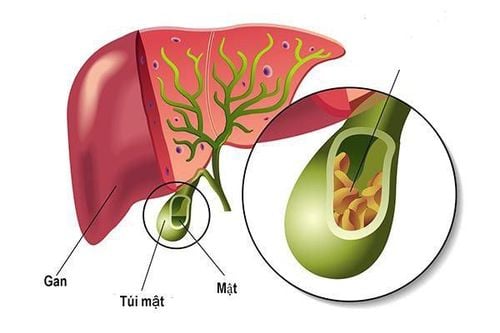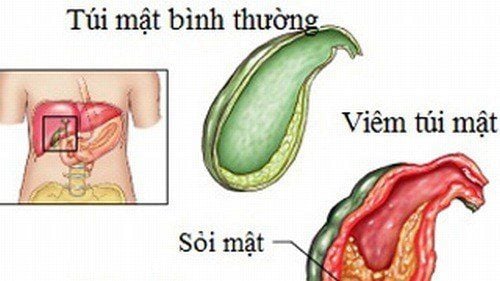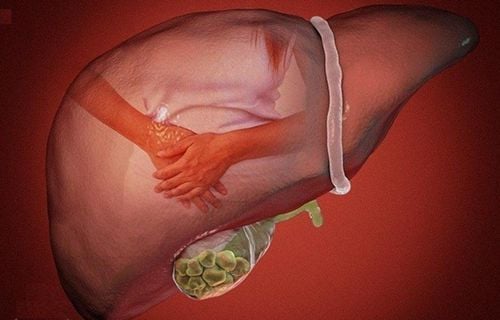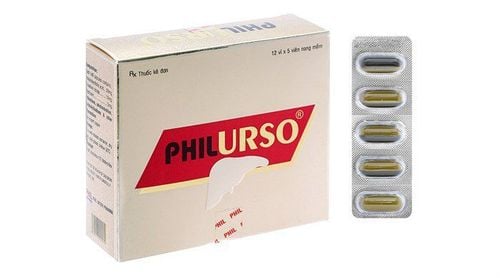This is an automatically translated article.
The article is expertly consulted by Master, Doctor Duong Xuan Loc - Gastroenterologist - General Surgery Department - Vinmec Danang International General Hospital.1. What are gallstones?
The gallbladder is a small, pear-shaped organ that is green in color. The gallbladder is located on the inferior surface of the right lobe of the liver, responsible for storing and concentrating bile. Bile is secreted by the liver, a part of bile will go into the gallbladder and be concentrated, then taken to the intestine to participate in the digestion of food.
Gallstone is essentially a solid form that is formed in the gallbladder through an imbalance of components in bile. Gallstones have many different types, so they also have different mechanisms of gallstone formation.

2. Types of gallstones and their formation mechanism
Gallstones are divided into 3 types: cholesterol stones, bile pigment stones, bile salts stones. Each type will have a different cause for gallstones to form.
2.1 Cholesterol Stones Cholesterol stones are composed mainly of cholesterol, and are the most common. Cholesterol is excreted by the liver into bile (which is one of the mechanisms to remove excess cholesterol), and for bile to transport cholesterol, cholesterol must be dissolved in bile. However, cholesterol is a fat and bile is water in nature, so in order for cholesterol to dissolve in bile, the liver must also synthesize two bile acids from cholesterol, cholic acid and cheno desoxycholic acid. These two acids combine with glycin and taurine in hepatocytes to form bile salts that dissolve cholesterol into bile.
When cholesterol has been dissolved in bile, it can be transported by the bile ducts. These bile acids are called primary bile acids, when entering the intestine, they will become secondary bile acids, cholic acid will become desoxycholic acid, then become lithocholic acid and finally excreted in the feces. So how are gallstones formed? Gallstones will form when for some reason there is an imbalance between the amount of cholesterol and bile salts. If the liver excretes too much cholesterol, it will not have enough soluble bile acids and lecithin, which will obviously lead to an amount of insoluble cholesterol.
Similarly, if the cholesterol level is normal, but the bile acid and lecithin levels are not enough, there is also an amount of insoluble cholesterol. In both cases, the undissolved cholesterol will stick together, forming cholesterol particles, gradually increasing in size and eventually forming gallstones. There are also two other processes that promote cholesterol stone formation. The first is that some individuals have a special background that has an abnormally fast formation and growth of cholesterol particles to form gallstones. Therefore, with the same levels of cholesterol, bile acids and lecithin, patients with gallstones formed cholesterol particles more rapidly than normal subjects.
The second process involves a decrease in the ability to contract and expel bile from the gallbladder, causing bile to stay inside the gallbladder longer, allowing cholesterol particles to form and grow.
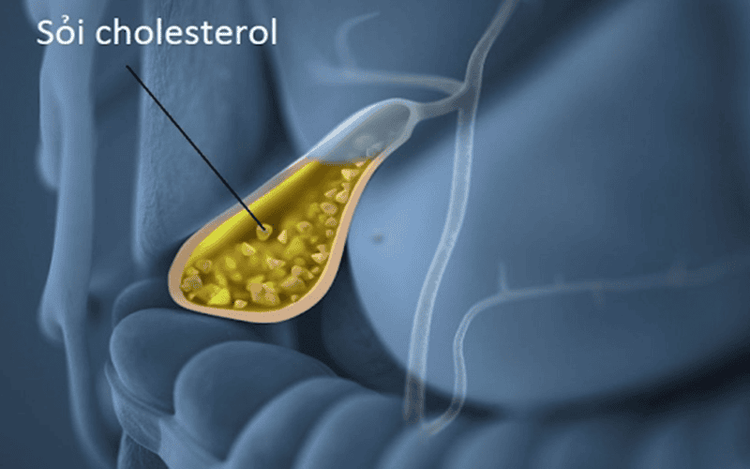
2.2 Pigment gallstones Pigment gallstones are the second most common type of gallstones, consisting of two types: black pigment gallstones and brown pigment gallstones. Bile pigment is a residue product formed from hemoglobin present in red blood cells. Old red blood cells, when destroyed, release hemoglobin, which converts to bilirubin and is released into the blood. Bilirubin is metabolized by the liver and excreted in the bile.
If there is too much bilirubin in the bile, the bilirubin can combine with other components in the bile (such as calcium) and form pigment stones. Because pigments are poorly soluble in bile, they easily combine to form granules, which gradually increase in size and finally form gallstones. Pigment stones that form this way are called black pigment stones because they are black and hard.
If the gallbladder reduces contraction or the flow of bile is obstructed for some reason, bacteria from the duodenum can travel up the bile ducts and gallbladder, changing the bilirubin present. Bilirubin, after being converted, combines with calcium to form bile pigment, then combines with fats in bile to form granules that develop into gallstones called brown pigment stones (because it is slightly brown in color). black but softer than black pigment stones).
2.3 Bile salt stones Bile salts when crystallized to form stones often combine with calcium and will be red.
Gallstones, if not detected and treated promptly, will cause blockage of the bile ducts, causing serious health effects. To determine exactly whether you have gallstones or not, you can go to a medical facility for an abdominal ultrasound or MRI or CT Scanner.
Please dial HOTLINE for more information or register for an appointment HERE. Download MyVinmec app to make appointments faster and to manage your bookings easily.






